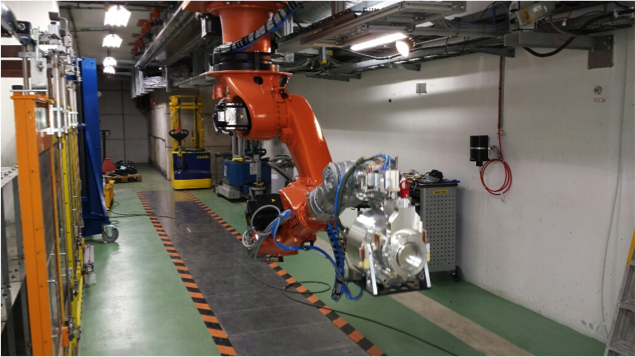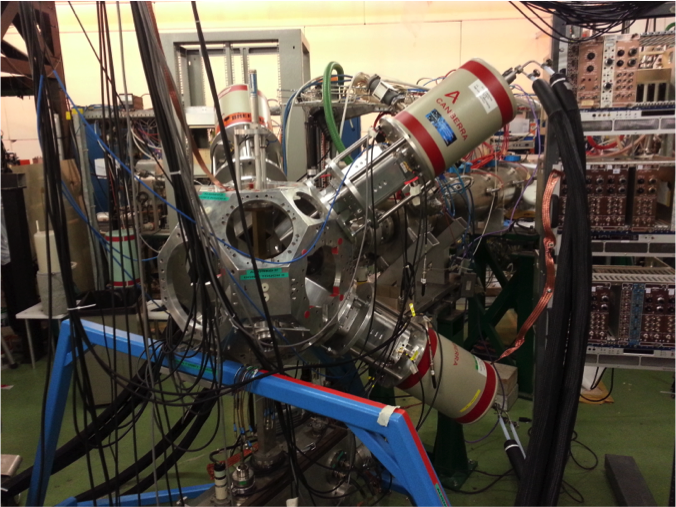Today the ISOLDE installation restarted its physics programme with beams from the Proton Synchrotron Booster. After a shutdown of almost a year and a half, there was a real buzz in the air as the first beam of protons hit the target of the first ISOLDE experiment.
Many improvements have been made to the ISOLDE installation during the first long shutdown (LS1) of CERN's accelerator complex. One of the main projects was the installation of new robots for handling the targets (see photo below). “Our targets are bombarded by protons from the Proton Synchrotron Booster’s beams and become very radioactive,” says Maria Jose Garcia Borge, spokesperson for the ISOLDE collaboration. “They therefore need to be handled carefully, which is where the robots came in. The robots we had until now were already over 20 years old and were starting to suffer from the effects of radiation. So LS1 was a perfect opportunity to replace them with more modern robots with electronic sensor feedback."

On the civil engineering side, three ISOLDE buildings have been demolished and replaced with a single building to house the ISOLDE team. It includes a new control room, a data storage room, three laser laboratories, a biology and materials laboratory, and a room for visitors, from which they can admire the ISOLDE hall in comfort. Another building has been extended to house the MEDICIS project, and two more – completed at the end of 2012 – are gradually being equipped with new electrical systems as well as the cooling and ventilation systems needed for the future HIE-ISOLDE.
In the ISOLDE hall itself, new permanent experimental stations have also been installed. “One of the permanent stations – called IDS or ISOLDE Decay Station (see photo below) – is dedicated to nuclear spectroscopy,” says Borge. “It will allow us to study beta decay and to measure the lifetime of excited states. The other permanent station – VITO – will be used for combined material measurements and biological analyses."

As for the experiment that started this week, it is picking up where the promising analyses carried out in 2012 left off: “Just before LS1, we carried out a medical physics experiment on terbium, directed by Institut Laue-Langevin (ILL) and the Paul Scherrer Institute (PSI),” says Borge. “It involved in vivo studies of the use of terbium isotopes for both detecting and treating cancerous tumours. Generally, two different chemical elements are used for diagnosis and therapy. Using isotopes of a single chemical element could be very useful in improving the reliability of the process."
For the remainder of 2014, the ISOLDE programme is already very busy: almost 40 low-energy experiments are already planned between now and December. At the same time, the necessary infrastructure for the HIE-ISOLDE superconducting accelerator will continue to be installed. Its first cryomodule is due to be installed in spring 2015, ready for high-energy physics to begin in the autumn of the same year.
